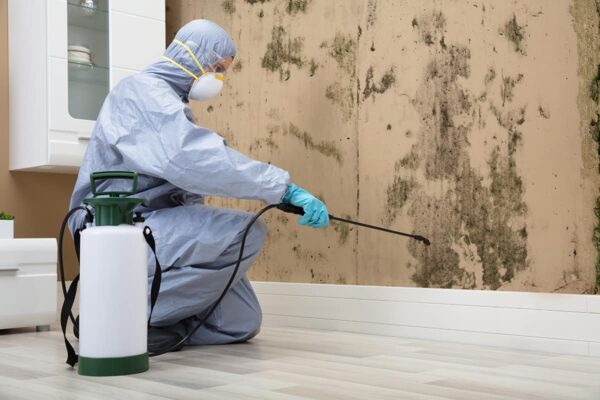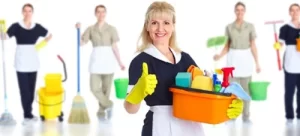Last updated on March 17, 2024
Key Takeaways:
- Understanding the dangers associated with mold growth
- Common health risks associated with mold exposure
- Identifying common signs of mold in your home
- Debunking common myths and misconceptions about mold
- Key factors to consider when hiring a mold remediation company
- Understanding different methods and techniques used for mold removal
- Evaluating the cost of professional mold remediation services
- Essential tools and safety precautions for DIY mold removal
- Step-by-step guide to effectively remove mold from different surfaces
- Preventing future mold growth through maintenance and prevention tips
- Maintaining proper indoor air quality to prevent mold growth
- Understanding the role of moisture control in mold prevention
- Regular inspection and maintenance to keep mold at bay
Understanding the Danger of Mold Infestation
Mold infestation is a serious issue that can have detrimental effects on both your health and your home. Understanding the dangers associated with mold growth is crucial in order to address the problem effectively. Mold can release spores into the air, which can cause a range of health issues, especially for individuals with respiratory conditions or compromised immune systems.
- Exploring the Health Risks Associated with Mold: Exposure to mold can lead to a variety of health risks. Some common symptoms of mold exposure include coughing, wheezing, itchy eyes, and throat irritation. Prolonged exposure to mold can also lead to more severe respiratory issues such as asthma and allergic reactions. In extreme cases, toxic mold species can even cause neurological symptoms and organ damage.
- Identifying Common Signs of Mold in Your Home: Spotting mold in your home is essential for prompt remediation. Look out for visible signs of mold growth, such as black or green spots on walls, ceilings, or other surfaces. Musty odors and water stains are also indicators of potential mold infestation. If you suspect mold, it’s important to take immediate action to prevent further damage and health risks.
- Debunking Common Myths and Misconceptions about Mold: There are several myths and misconceptions surrounding mold that can hinder effective remediation. One common myth is that bleach can effectively kill and remove mold. While bleach can temporarily kill surface mold, it does not address the underlying issue and can even contribute to mold growth in the long term. It’s crucial to understand the proper methods and techniques for mold removal to ensure successful remediation.
Choosing the Right Mold Remediation Services
When facing a mold problem, it’s important to choose the right mold remediation services to ensure effective and safe removal. Hiring a professional mold remediation company can provide you with the expertise and resources necessary to address the issue efficiently.
- The Key Factors to Consider When Hiring a Mold Remediation Company: When selecting a mold remediation company, there are several key factors to consider. Look for a company that is licensed, insured, and certified in mold remediation. This ensures that they have the necessary qualifications and expertise to handle the job. It’s also important to consider the company’s reputation and experience in dealing with mold infestations.
- Understanding the Different Methods and Techniques Used for Mold Removal: There are various methods and techniques used for mold removal, and it’s essential to understand them to make an informed decision. Some common methods include containment, air filtration, and mold removal using specialized equipment and products. The chosen method will depend on the severity and extent of the mold infestation.
- Evaluating the Cost of Professional Mold Remediation Services: The cost of professional mold remediation services can vary depending on several factors, including the size of the affected area and the extent of the mold growth. It’s important to obtain multiple quotes from different companies and compare their services and pricing. While cost is a consideration, it’s crucial to prioritize the expertise and reputation of the company over the price.
DIY Mold Removal: Tips and Techniques
While professional mold remediation services are recommended for large or extensive mold infestations, there are certain circumstances where DIY mold removal can be effective. However, it’s essential to follow proper techniques and safety precautions to ensure success and protect your health.
- Essential Tools and Safety Precautions for DIY Mold Removal: Before attempting DIY mold removal, gather the necessary tools and materials, such as gloves, goggles, a respirator, and mold removal products. It’s important to protect yourself from mold spores and avoid direct contact with the affected areas. Make sure to ventilate the area properly and work in a well-lit environment.
- Step-by-Step Guide to Effectively Remove Mold from Different Surfaces: The process of removing mold will vary depending on the surface it has affected. For non-porous surfaces such as glass or metal, thoroughly clean the area with a mold-killing solution and scrub any visible mold. For porous surfaces such as drywall or carpet, it may be necessary to remove and replace the affected materials entirely to ensure effective mold removal.
- Preventing Future Mold Growth: Maintenance and Prevention Tips: After successfully removing mold from your home, it’s crucial to take preventive measures to avoid future infestations. Keeping your home dry and well-ventilated is key to preventing mold growth. Fix any plumbing leaks promptly, ensure proper insulation, and use dehumidifiers in damp areas. Regularly inspect your home for any signs of moisture or mold and address them immediately to prevent further issues.
Mold Remediation Best Practices: Ensuring a Mold-Free Home
To maintain a mold-free home, it’s important to incorporate best practices and adopt preventive measures to minimize the risk of mold growth. By proactively managing indoor air quality, moisture control, and implementing regular inspections and maintenance, you can significantly reduce the chances of mold infestation.
- Maintaining Proper Indoor Air Quality to Prevent Mold Growth: Good indoor air quality is essential in preventing mold growth. Ensure proper ventilation in all areas of your home, especially in damp spaces such as bathrooms and kitchens. Regularly clean air filters and consider using air purifiers to remove airborne mold spores.
- Understanding the Role of Moisture Control in Mold Prevention: Moisture control is key to preventing mold growth. Regularly inspect your home for any leaks or moisture issues and address them promptly. Maintain optimal humidity levels in your home by using dehumidifiers in high-moisture areas. Properly insulate your home to prevent condensation, which can lead to mold growth.
- Regular Inspection and Maintenance to Keep Mold at Bay: Regularly inspect your home, paying close attention to areas prone to moisture, such as basements, attics, and crawl spaces. Look out for any signs of water damage, leaks, or musty odors. Address any issues immediately to prevent mold growth from spreading and causing further damage.
By understanding the danger of mold infestation, choosing the right mold remediation services, utilizing proper DIY mold removal techniques, and implementing mold prevention best practices, you can effectively and safely remove mold from your home. Remember to prioritize your health and seek professional assistance for extensive or severe mold infestations. With proper care and maintenance, you can ensure a mold-free and healthy living environment for you and your family.
FAQ
Question: What are the dangers associated with mold growth?
Answer: Mold growth can have detrimental effects on both your health and your home. Mold can release spores into the air, which can cause a range of health issues, especially for individuals with respiratory conditions or compromised immune systems.
Question: What are the common health risks associated with mold exposure?
Answer: Exposure to mold can lead to a variety of health risks. Some common symptoms of mold exposure include coughing, wheezing, itchy eyes, and throat irritation. Prolonged exposure to mold can also lead to more severe respiratory issues such as asthma and allergic reactions. In extreme cases, toxic mold species can even cause neurological symptoms and organ damage.
Question: How can I identify common signs of mold in my home?
Answer: Spotting mold in your home is essential for prompt remediation. Look out for visible signs of mold growth, such as black or green spots on walls, ceilings, or other surfaces. Musty odors and water stains are also indicators of potential mold infestation. If you suspect mold, it’s important to take immediate action to prevent further damage and health risks.
Question: Is bleach an effective solution for killing and removing mold?
Answer: No, bleach is not an effective solution for mold removal. While bleach can temporarily kill surface mold, it does not address the underlying issue and can even contribute to mold growth in the long term. It’s crucial to understand the proper methods and techniques for mold removal to ensure successful remediation.
Question: What factors should I consider when hiring a mold remediation company?
Answer: When selecting a mold remediation company, it’s important to consider factors such as licensing, insurance, and certification in mold remediation. It’s also important to consider the company’s reputation and experience in dealing with mold infestations.
Question: What are the different methods and techniques used for mold removal?
Answer: There are various methods and techniques used for mold removal, including containment, air filtration, and mold removal using specialized equipment and products. The chosen method will depend on the severity and extent of the mold infestation.
Question: How much do professional mold remediation services cost?
Answer: The cost of professional mold remediation services can vary depending on several factors, including the size of the affected area and the extent of the mold growth. It’s important to obtain multiple quotes from different companies and compare their services and pricing.
Question: What tools and safety precautions do I need for DIY mold removal?
Answer: Before attempting DIY mold removal, gather the necessary tools and materials, such as gloves, goggles, a respirator, and mold removal products. It’s important to protect yourself from mold spores and avoid direct contact with the affected areas. Make sure to ventilate the area properly and work in a well-lit environment.














Be First to Comment